Juin 15, 2018 / Université nationale du Gyeongsang, Corée du Sud / Journal de médecine clinique
Texte/ Wu Tingyao
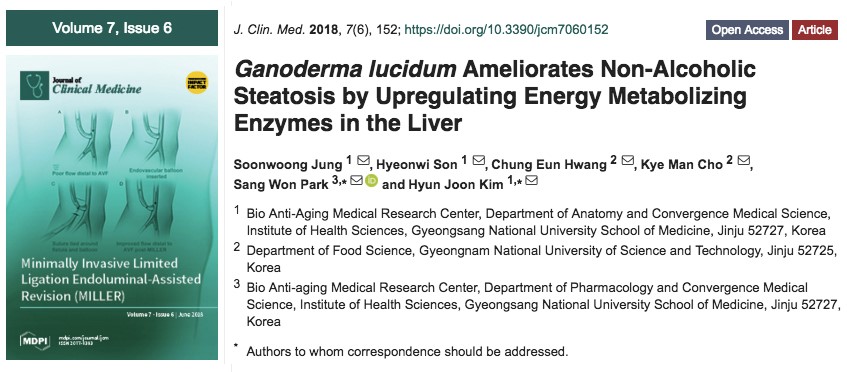
L'École de médecine de l'Université nationale de Gyeongsang en Corée du Sud a publié un article dans le Journal of Clinical Medicine en juin. 2018 déclarant queGanoderma lucidum peut réduire l’accumulation de graisse dans le foie causée par un régime riche en graisses, mais des expériences sur des animaux ont également montré que les souris engraissées par un régime riche en graisses auront également des problèmes moins graves de glycémie et de lipides sanguins en raison de l'intervention deGanoderma lucidum.
Les souris expérimentales ont été divisées en quatre groupes: alimentation normale (ND), alimentation normale (ND) + Ganoderma lucidum (GL), régime riche en graisses (HFD), régime riche en graisses (HFD) + Ganoderma lucidum (GL). Dans l'alimentation du groupe à régime normal, la graisse représentait 6% du total des calories; dans l'alimentation du régime riche en graisses, la graisse représentait 45% du total des calories, ce qui était 7.5 l'époque de l'ancien. LeGanoderma lucidum donné aux souris est en fait un extrait à l'éthanol de la fructification deGanoderma lucidum. Les chercheurs ont nourri les souris avec une dose de 50 mg/kgGanoderma lucidum extrait d'éthanol par jour pendant cinq jours par semaine.
Après seize semaines (quatre mois) d'expériences, il a été constaté qu'un régime riche en graisses à long terme peut doubler le poids des souris. Même s'ils mangentGanoderma lucidum, il est difficile de bloquer la tendance à prendre du poids (Chiffre 1).
Cependant, dans le cadre d'un régime riche en graisses, bien que les souris qui mangentGanoderma lucidum et les souris qui ne mangent pasGanoderma lucidum semblent avoir des niveaux d’obésité similaires, leur état de santé sera très différent selon qu'ils mangent ou ne mangent pasGanoderma lucidum.
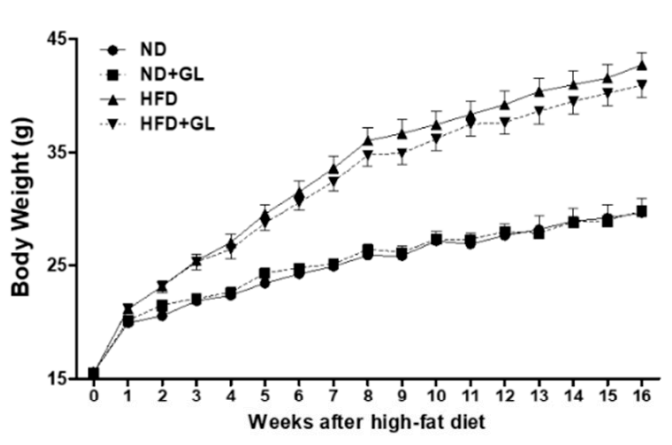
Figure 1 L'effet deGanoderma lucidum sur le poids corporel des souris nourries avec HFD
Ganoderma lucidum réduit l’accumulation de graisse viscérale chez les souris nourries avec HFD.
Chiffre 2 est un diagramme statistique de l'apparence et du poids du foie, graisse périrénale et graisse épididymaire de chaque groupe de souris à la fin de l'expérience.
Le foie est l’usine de transformation des nutriments dans le corps. Tous les nutriments absorbés par l'intestin seront décomposés, synthétisé et transformé par le foie sous une forme utilisable par les cellules, puis distribué partout par la circulation sanguine. Lorsqu’il y a une offre excédentaire, le foie transformera les calories excédentaires en graisse (triglycérides) et rangez-le en cas d'urgence.
Plus la graisse est stockée, plus le foie devient gros et lourd. Of course, l'excès de graisse s'accumulera également autour d'autres organes internes, et la graisse périrénale et la graisse épididymaire sont représentatives de l'accumulation de graisse viscérale observée lors des expérimentations animales..
On peut le voir sur la figure 2 queGanoderma lucidum peut réduire considérablement l'accumulation de graisse dans le foie et d'autres organes internes causée par un régime riche en graisses.
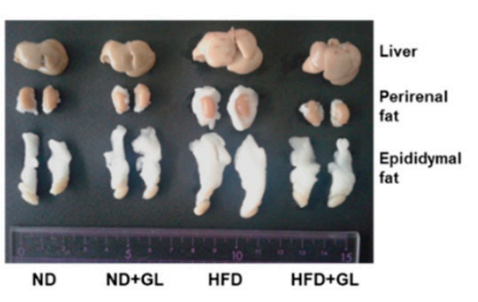
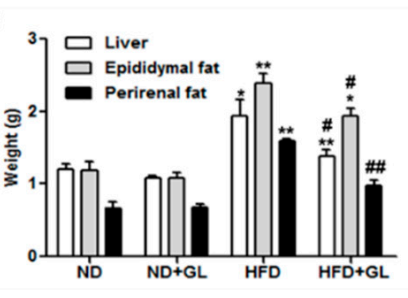
Figure 2 L'effet deGanoderma lucidum sur la graisse viscérale chez les souris nourries avec HFD
Ganoderma lucidum réduit la stéatose hépatique chez les souris nourries avec HFD.
Les chercheurs ont ensuite analysé la teneur en graisse du foie des souris.: les coupes de tissus hépatiques des souris de chaque groupe ont été colorées avec un colorant spécial, et les gouttelettes d'huile dans le tissu hépatique se combineraient avec le colorant et deviendraient rouges. Comme le montre la figure 3, la teneur en graisses du foie était significativement différente dans le même régime riche en graisses, avec ou sans ajout deGanoderma lucidum.
La graisse dans les tissus hépatiques des souris de chaque groupe a été quantifiée dans la figure 4, et on a pu voir que la stéatose hépatique dans le groupe au régime riche en graisses a atteint le niveau 3 (la teneur en graisse était supérieure à 66% du poids du foie entier, indiquant une stéatose hépatique sévère). En même temps, la teneur en graisse du foie de souris nourries avec du HFD qui ont mangéGanoderma lucidum a été réduit de moitié.
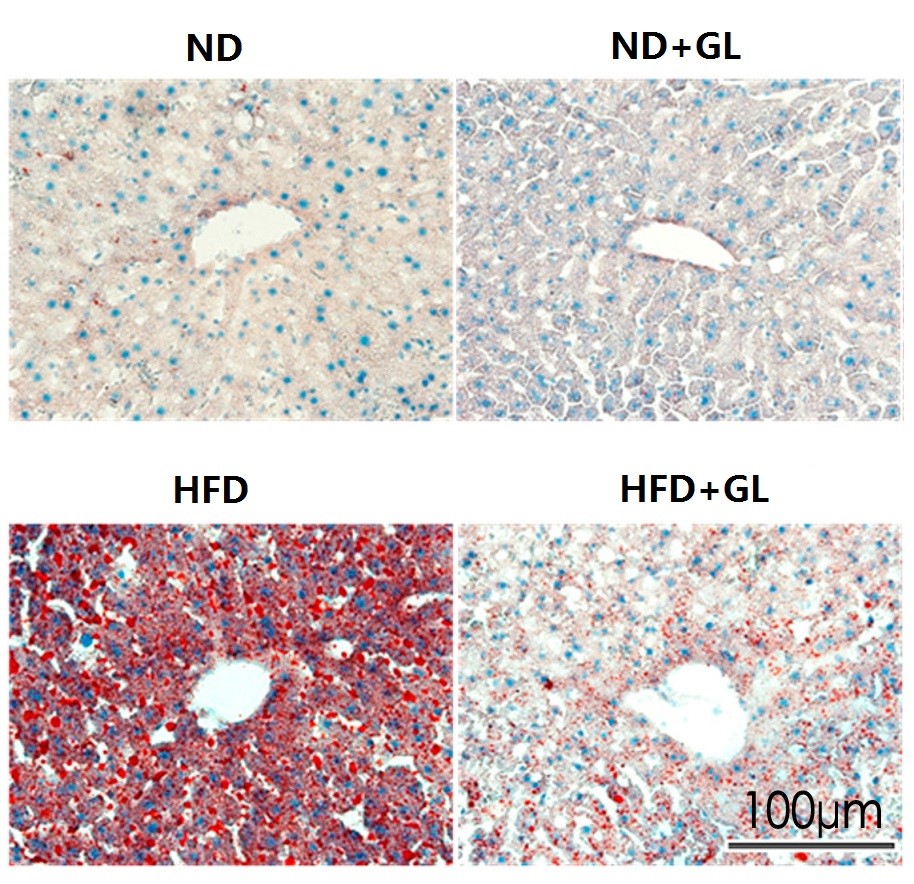
Figure 3 Résultats de coloration des graisses sur des coupes de tissus hépatiques de souris
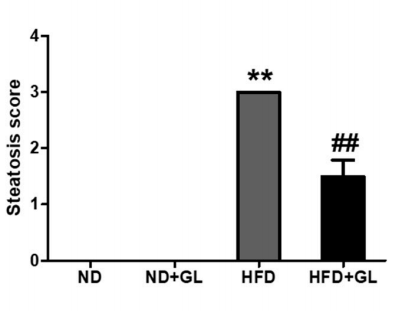
Figure 4 L'effet deGanoderma lucidum sur l'accumulation de graisse hépatique chez des souris nourries avec HFD
[Description] La gravité de la stéatose hépatique a été classée en grades 0, 1, 2, et 3 selon la proportion de graisse dans le poids du foie: moins que 5%, 5-33%, plus que 33%-66% et plus que 66%, respectivement. La signification clinique était normale, bénin, stéatose hépatique modérée et sévère.
Ganoderma lucidum prévient l'hépatite chez les souris nourries avec HFD.
Une accumulation excessive de graisse augmentera les radicaux libres dans le foie, rendre les cellules hépatiques sujettes à l’inflammation en raison des dommages oxydatifs, affectant ainsi la fonction hépatique. Cependant, tous les foies gras n’évolueront pas jusqu’au niveau de l’hépatite. Tant que les cellules hépatiques ne sont pas trop endommagées, ils peuvent être maintenus dans une « simple accumulation de graisse » relativement inoffensive.
On peut le voir sur la figure 5 qu'un régime riche en graisses peut doubler l'ALT sérique (Google Tag), l'indicateur le plus important de l'hépatite, du niveau normal d'environ 40 U/L; cependant, siGanoderma lucidum est pris en même temps, la possibilité d'hépatite est considérablement réduite. Évidemment, Ganoderma lucidum a un effet protecteur sur les cellules hépatiques infiltrées dans les graisses.
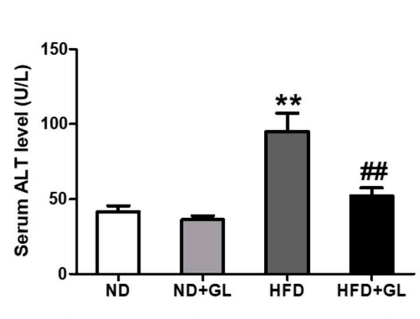
Figure 5 L'effet deGanoderma lucidum sur les indices d'hépatite chez des souris nourries avec HFD
Ganoderma lucidum soulage les problèmes de lipides sanguins chez les souris nourries avec HFD.
Quand le foie synthétise trop de graisse, les lipides sanguins sont également sujets à des anomalies. Cette expérimentation animale réalisée en Corée du Sud a révélé qu'un régime riche en graisses pendant quatre mois peut augmenter le taux de cholestérol., butGanoderma lucidum peut réduire la gravité du problème (Chiffre 6).
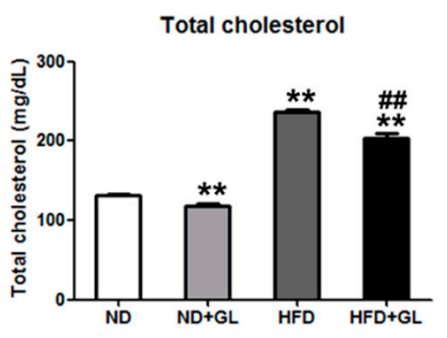
Figure 6 L'effet deGanoderma lucidum sur le cholestérol total sérique chez des souris nourries avec HFD
Ganoderma lucidum inhibe l'augmentation de la glycémie chez les souris nourries avec HFD.
Des expériences ont également montré qu'un régime riche en graisses peut entraîner une augmentation de la glycémie.. Cependant, siGanoderma lucidum est pris en même temps, le taux de glycémie peut évidemment être contrôlé avec une légère augmentation (Chiffre 7).
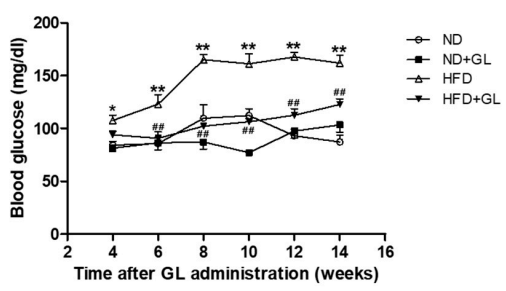
Figure 7 L'effet deGanoderma lucidum sur la glycémie chez des souris nourries avec HFD
Ganoderma lucidum améliore la capacité du corps des souris nourries avec HFD à réguler la glycémie.
Les chercheurs ont également effectué un test de tolérance au glucose sur les souris au cours de la quatorzième semaine de l'expérience., c'est, à jeun après 16 heures de jeûne, les souris ont reçu une injection d'une grande quantité de glucose, et le changement de glycémie dans les deux heures a été observé. Plus la fluctuation du taux de glycémie est faible, meilleure est la capacité du corps de la souris à réguler la glycémie.
Il a été constaté que la fluctuation des niveaux de glucose dans le sang du HFD + Le groupe GL était inférieur à celui du groupe HFD (Chiffre 8). Cela signifie queGanoderma lucidum a pour effet d'améliorer la régulation de la glycémie provoquée par un régime riche en graisses.
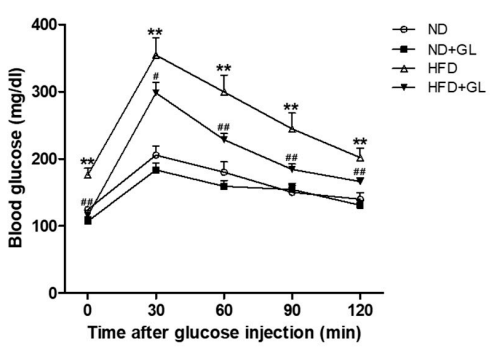
Figure 8 L'effet deGanoderma lucidumsur la tolérance au glucose chez les souris nourries avec HFD
Ganoderma lucidum améliore la résistance à l'insuline chez les souris nourries avec HFD.
Les chercheurs ont également réalisé un test de tolérance à l'insuline sur des souris.: Au cours de la quatorzième semaine de l'expérience, des souris à jeun ont reçu une injection d'insuline, et les changements dans la glycémie ont été utilisés pour déterminer la sensibilité des cellules des souris à l’insuline..
L'insuline est une hormone, qui joue le rôle de clé, permettre au glucose contenu dans nos aliments de pénétrer dans les cellules du corps à partir de la circulation sanguine pour produire de l'énergie. Dans des circonstances normales, après l'injection d'insuline, le niveau de glycémie d'origine diminuera dans une certaine mesure. Parce que plus de glucose sanguin pénètre dans les cellules grâce à l'insuline, le taux de sucre dans le sang diminuera naturellement.
Cependant, les résultats de l'expérience ont montré qu'un régime riche en graisses à long terme rendrait les cellules insensibles à l'insuline, de sorte que le taux de glucose dans le sang resterait élevé après l'injection d'insuline., mais en même temps, la fluctuation de la glycémie chez les souris nourries avec HFD qui mangeaientGanoderma lucidum était similaire à celui des souris nourries avec la ND (Chiffre 9). Il est évident queGanoderma lucidum a pour effet d’améliorer la résistance à l’insuline.
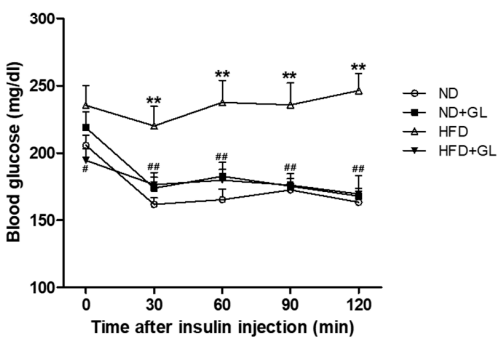
Figure 9 L'effet deGanoderma lucidum sur la résistance à l'insuline chez les souris nourries avec HFD
Le mécanisme deGanoderma lucidum dans la réduction de la stéatose hépatique
L'obésité peut induire une résistance à l'insuline, et la résistance à l'insuline provoque non seulement une hyperglycémie, mais constitue également le facteur le plus important conduisant à une stéatose hépatique non alcoolique.. Donc, lorsque la résistance à l’insuline est réduite deGanoderma lucidum, le foie est naturellement moins sujet à l’accumulation de graisse.
En outre, les chercheurs ont également confirmé que l'extrait éthanolique deGanoderma lucidum la fructification utilisée dans les expérimentations animales peut non seulement réguler directement l'activité de certaines enzymes impliquées dans le métabolisme des lipides dans le foie, mais également inhiber directement la synthèse des graisses par les cellules hépatiques, et l'effet est proportionnel au dosage deGanoderma lucidum. Plus important encore, après ces doses efficaces deGanoderma lucidum ont été cultivés avec des cellules hépatiques humaines pour 24 hours, les cellules étaient toujours bien vivantes.
Ganoderma lucidum a pour effet d'abaisser la glycémie, réduire les graisses et protéger le foie.
Les résultats de recherche mentionnés ci-dessus nous indiquent non seulement que l'extrait alcoolique deGanoderma lucidum la fructification peut réduire les symptômes de l'hyperglycémie, hyperlipidémie, et la stéatose hépatique causée par un régime riche en graisses, mais nous rappellent également qu'il est possible d'avoir une stéatose hépatique sans boire d'alcool..
En médecine, La stéatose hépatique causée par des facteurs non alcooliques est collectivement appelée « stéatose hépatique non alcoolique ». Bien qu'il existe d'autres facteurs possibles (comme les médicaments), les habitudes alimentaires et les habitudes de vie restent les causes les plus fréquentes. Pensez à la façon dont le foie gras, qui est tant aimé des gloutons, est fait? C'est pareil avec les gens!
Selon les statistiques, près d'un tiers des adultes ont des problèmes simples (c'est, aucun symptôme d'hépatite) foie gras sans alcool, et environ un quart d’entre eux évolueront vers une hépatite graisseuse d’ici quinze ans. Il existe même des rapports selon lesquels la stéatose hépatique non alcoolique est devenue la principale cause d'un indice ALT anormal à Taiwan. (33.6%), dépassant de loin le virus de l’hépatite B (28.5%) et le virus de l'hépatite C (13.2%). (Voir référence 2 pour plus de détails)
Ironiquement, alors que les agences mondiales de santé continuent de lutter contre l’hépatite virale avec des vaccins et des médicaments, la prévalence de la stéatose hépatique causée par une trop bonne alimentation ou une consommation excessive d’alcool augmente.
Maladie du foie gras (stéatose) se produit lorsque la graisse dans le foie atteint ou dépasse 5% du poids du foie. Le diagnostic initial de stéatose hépatique doit reposer sur une échographie abdominale ou une tomodensitométrie (CT). Si vous n'avez pas pris l'habitude de faire des bilans de santé, vous pouvez également déterminer si vous souffrez d'une stéatose hépatique en fonction de syndromes métaboliques tels qu'une obésité modérée., hyperglycémie (taper 2 diabète) et hyperlipidémie, car ces symptômes ou maladies surviennent souvent en association avec une stéatose hépatique non alcoolique (NAFLD).
C’est juste qu’il n’existe pas de médicaments spécifiques contre la stéatose hépatique.. C'est pourquoi, après le diagnostic de stéatose hépatique, le médecin ne peut vous prescrire qu'un régime léger, exercice et perte de poids plutôt que des traitements actifs. Cependant, il n'est pas facile de changer ses habitudes alimentaires et ses habitudes de vie. La plupart des gens sont coincés soit dans le bourbier de « ne pas réussir à contrôler leur alimentation et à augmenter l’activité physique », soit dans la lutte de « ne pas réussir à se débarrasser de la stéatose hépatique même en contrôlant leur alimentation et en augmentant l’activité physique »..
Que diable devrions-nous faire? Après avoir lu les résultats des recherches de l'Université nationale de Gyeongsang en Corée du Sud, nous savons qu'il existe une autre arme magique, c'est, manger l'extrait d'éthanol deGanoderma lucidum corps fructifère.
Ganoderma lucidum, qui a pour fonction de protéger le foie, abaisser la glycémie, et réduire la graisse, est vraiment rentable; même si cela ne peut toujours pas vous faire perdre du poids, cela peut au moins vous rendre en meilleure santé même si vous êtes obèse.
[Source]
Jung S, et autres. Ganoderma lucidum améliore la stéatose non alcoolique en régulant positivement les enzymes métabolisant l'énergie dans le foie. J Clin Med. 2018 juin 15;7(6). pii: E152. est-ce que je: 10.3390/jcm7060152.
[Lectures complémentaires]
Par coïncidence, au début 2017, un rapport « Activité antidiabétique desGanoderma lucidum les polysaccharides F31 régulent négativement les enzymes hépatiques régulatrices du glucose chez les souris diabétiques » a été publié conjointement par l'Institut de microbiologie du Guangdong et le Centre provincial de contrôle et de prévention des maladies du Guangdong.. Basé sur un modèle animal de type 2 diabète, il explore le mécanisme de régulation deGanoderma lucidum fructification polysaccharides actifs sur la glycémie et la prévention et le traitement de l'hépatite causée par le diabète. Son mécanisme d'action est également lié à la régulation des enzymes impliquées dans le métabolisme énergétique du foie et à l'amélioration de la résistance à l'insuline.. Lui et ce rapport sud-coréen arrivent au même but par des moyens différents. Les amis intéressés pourraient tout aussi bien se référer à ce rapport.
Documents de référence sur la stéatose hépatique non alcoolique
1. Teng-cing Huang et al.. Foie gras non alcoolique. Médecine familiale et soins médicaux primaires, 2015; 30 (11): 314-319.
2. Ching-feng Suet al. Diagnostic et traitement de la stéatose hépatique non alcoolique. 2015; 30 (11) : 255-260.
3. Ying-tao Wu et coll.. Introduction au traitement de la stéatose hépatique non alcoolique. Revue pharmaceutique, 2018; 34 (2) : 27-32.
4. Huei-wun Liang: La stéatose hépatique peut être inversée et dire adieu à la stéatose hépatique! Prévention des maladies du foie & Site Web de la Fondation pour la recherche sur le traitement.
FIN
À propos de l'auteur/Mme. Wu Tingyao
Wu Tingyao rapporte des informations de première main sur le Ganoderma depuis 1999. Elle est l'auteur de Guérir avec Ganoderma (publié dans The People's Medical Publishing House en avril 2017).
★ Cet article est publié sous l'autorisation exclusive de l'auteur.
★ Les œuvres ci-dessus ne peuvent pas être reproduites, extrait ou utilisé d’une autre manière sans l’autorisation de l’auteur.
★ Pour les violations de la déclaration ci-dessus, l'auteur assumera les responsabilités juridiques pertinentes.
★ Le texte original de cet article a été rédigé en chinois par Wu Tingyao et traduit en anglais par Alfred Liu.. S'il y a une divergence entre la traduction (Anglais) et l'original (Chinois), le chinois original prévaudra. Si les lecteurs ont des questions, veuillez contacter l'auteur original, MS. Wu Tingyao.



